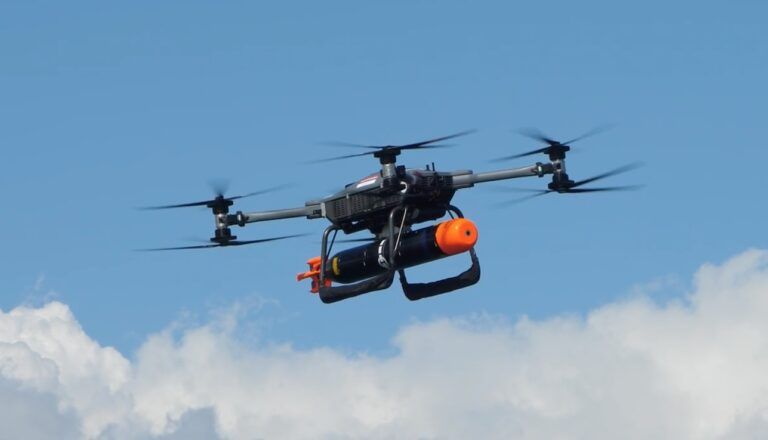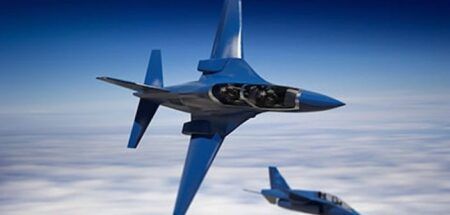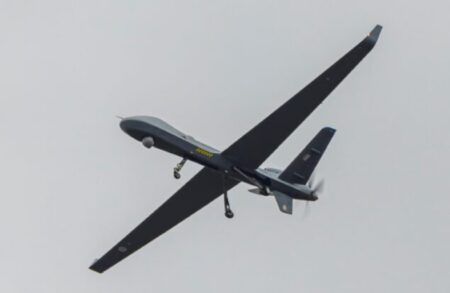BAE Systems has demonstrated the performance of a heavy-lift drone during a major NATO exercise off the coast of Portugal.
The BAE Systems and Malloy Aeronautics battery-powered T-600 heavy lift uncrewed air system (UAS) is capable of vertical take-off and landing, can carry a payload of 200kg and can travel at up to 140km/h (86mph). It has a range of up to 80km (50 miles) depending on payload.
The drone is around the size of a small car and is designed to be easily disassembled for transportation.
During the NATO exercise, known as REPMUS (Robotic Experimentation and Prototyping with Maritime Uncrewed Systems) the demonstrator successfully released an inert Sting Ray training variant anti-submarine torpedo during a flight mission at sea for the first time.
The T-600 is a test aircraft designed to develop, validate and demonstrate technologies for the T-650. The T-650 will be a an all-electric heavy lift UAS able to be rapidly reconfigured for military, commercial and humanitarian uses.
The T-650 will provide capabilities in the areas of automated logistics and resupply, casualty evacuation and anti-submarine warfare whilst reducing the environmental impact of our armed forces.
Neil Appleton, head of sustainable electric products, BAE Systems Air said, “In just two years since we launched our collaboration with Malloy, we’ve developed a heavy lift UAS and working with the UK Royal Navy and Portuguese Navy, have taken part in the latest NATO REPMUS exercise.
“The demonstration showcased the capability of our T-600 technology demonstrator, carrying an inert Sting Ray torpedo in front of the world’s premier naval forces. It’s a fantastic achievement in our collaboration with Malloy and a sign of our joint ambitions to bring new capabilities to our customers.”
Oriol Badia, CEO of Malloy Aeronautics said, “Our smaller T-150 UAS have been tested and operated for years by the UK MoD and US DoD, but the T-600 has gone from concept to operational demonstrator in record time for a vehicle in this payload class.
“The collaborative success seen at REPMUS adds to the list of promising capabilities being tested with this platform, including last-mile resupply and CASEVAC, and proves that modular, multi-mission UAS can reduce the logistics burden and increase operational tempo at a fraction of the cost.”
The T-650 programme is being developed within BAE System’s FalconWorks, advanced and agile R&D department.
The REPMUS demonstration also involved L3 Harris and General Dynamics UK, which provided the GnatHD carriage and release system and Distributed Stores Management control system respectively.





